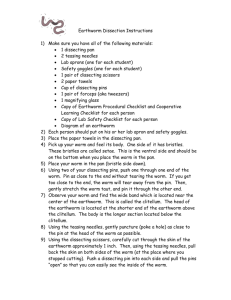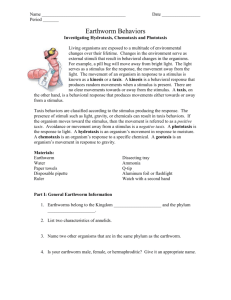Worm Dissection Lab Report
advertisement
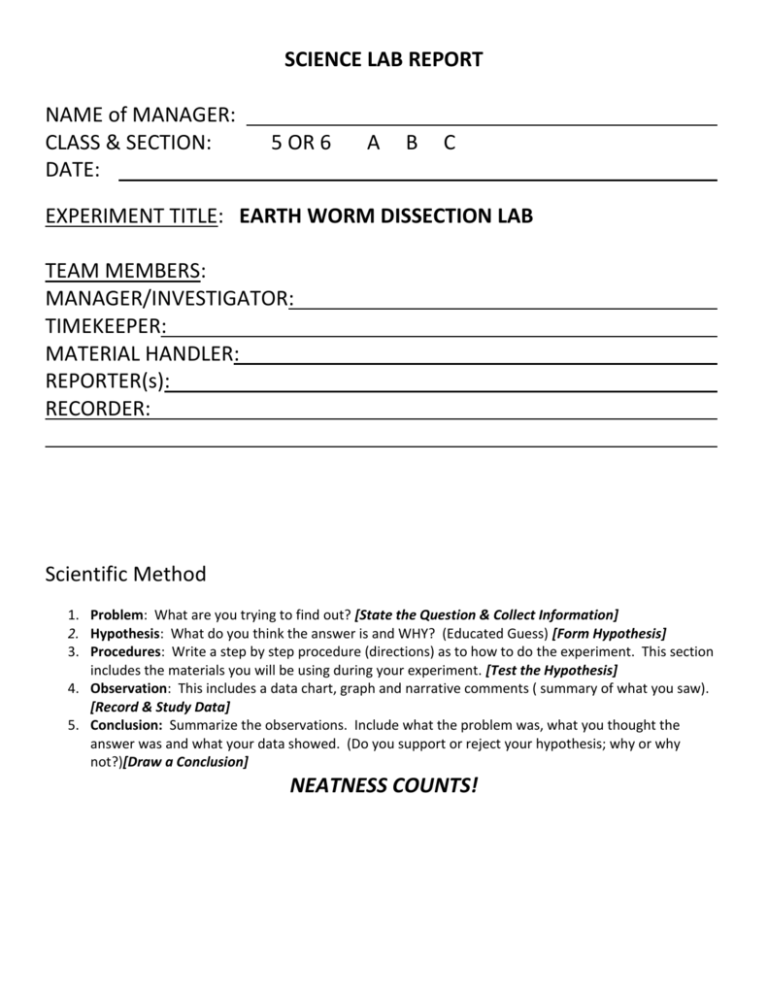
SCIENCE LAB REPORT NAME of MANAGER: CLASS & SECTION: DATE: 5 OR 6 A B C EXPERIMENT TITLE: EARTH WORM DISSECTION LAB TEAM MEMBERS: MANAGER/INVESTIGATOR: TIMEKEEPER: MATERIAL HANDLER: REPORTER(s): RECORDER: Scientific Method 1. Problem: What are you trying to find out? [State the Question & Collect Information] 2. Hypothesis: What do you think the answer is and WHY? (Educated Guess) [Form Hypothesis] 3. Procedures: Write a step by step procedure (directions) as to how to do the experiment. This section includes the materials you will be using during your experiment. [Test the Hypothesis] 4. Observation: This includes a data chart, graph and narrative comments ( summary of what you saw). [Record & Study Data] 5. Conclusion: Summarize the observations. Include what the problem was, what you thought the answer was and what your data showed. (Do you support or reject your hypothesis; why or why not?)[Draw a Conclusion] NEATNESS COUNTS! PROBLEM: What purpose does an earthworm serve in our world? How does its anatomy help it to do its job? HYPOTHESIS: My hypothesis is that the anatomy of the earthworm helps it do its job by EXPERIMENT PROCEDURES: 1. MANAGER/LEADER: Read entire lab instructions as a group 2. MATERIAL HANDLER: Get materials on list 3. ALL TEAM MEMBERS: Examine earthworm with magnifying glass 4. MATERIAL HANDLER: a. Place the earthworm (flattened,lighter side) up. If it does not fit… b. Cut off the tail end of the worm to fit the worm into the tray. Save the tail end for later observation. The tail end is the end farther from the lighter colored glandular swelling on the earthworm. (only do this if the worm does not fit) MATERIALS Earthworm Dissection tray Scalpel Pins Alcohol Paper towels Magnifying Glass Dissection tool kit Sketch Paper Pencil Lab Report Goggles Smock EXTERNAL STRUCTURES – Label the external structures of the earthworm. Be very detailed. A. Segments – The earthworm is formed in segments both on the outside and on the inside. The segments are numbered beginning with segment 1 at the mouth, in order to locate and study specific structures of the worm. B. Lip – Note the fleshy lobe covering the mouth at the head end of the worm. C. Mouth – Observe this opening at segment. D. Bristles – Note the four pairs of stiff hairs found on each segment except the first one and the last one. Two pairs are on the belly and two pairs on the sides of each segment. Feel the bristles by lightly moving the finger forward and back along the surface of the worm. E. Sperm receptacle openings – Note the openings between segments 9-10 and 10-11 for receiving sperm from another worm. F. Egg duct openings – Note the two small holes on segment 14 for release of eggs. G. Sperm duct openings – Note the two holes on segment 15 for release of sperm to another worm. H. Glandular swelling – observe the lighter-colored swelling from segments 31 to 37, covering the sides and back of the worm. I. Anus – Observe the opening at the tail end of the worm. DISSECTION1. Turn the worm over with the belly (flattened, lighter side) down. 2. Pin each end of the worm to hold it in place. 3. Carefully open the earthworm by cutting with your scalpel along the center of the back for the length of the worm. Cut only deep enough to open the body wall and expose the organs on the inside. 4. Pin open the body wall on each side all along the cut. Move the end pins to the sides to complete the opening of the body wall. INTERNAL STRUCTURES: Label the internal structures of the earthworm. Be very detailed A. Body Cavity – Note that a cavity is formed between the body wall and the food tube. B. Septum – Note that each segment is separated from the others by a thing membrane. C. Mouth Cavity – a tube extends from the mouth in segments 1 – 3. D. Throat – Muscular part of the food tube in segments 4 – 5. E. Ganglia – A primitive brain found just in front of the throat in segment 3. F. Gullet – Food tube from segments 6 – 14. G. Hearts – Five blood vessel loops in segments 7 – 11. H. Sacs – Note the whitish sacs in segments 9, 11 and 13 for sperm storage. I. Crop – A thin-walled storage organ for food, which is part of the food tube, in segments 15 and 16. J. Gizzard – A thick-walled grinding organ, which is part of the food tube, in segments 17 and 18. K. Nerve Cord – Main nerve cord found just under the belly blood vessel, from segment 4 to the end. L. Back Blood Vessel – Vein found just above the intestine; it carries blood to the hearts. M. Belly Blood Vessel – Artery found just under the intestine; it carries blood away from the hearts. N. Intestine – the food tube from segment 19 to the anus. 5. Cut open the intestine along part of its length to see the food material inside. On the cut made to remove the tail note the fold of the intestine and the internal cavity of the intestine. OBSERVATION: EXTERNAL DRAWING OF EARTHWORM ANATOMY INTERNAL DRAWING OF EARTHWORM ANATOMY CONCLUSION: My hypothesis was supported/rejected because EARTH WORM LAB
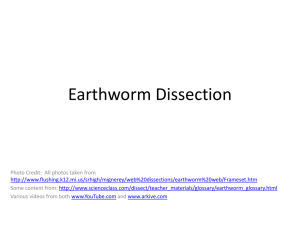

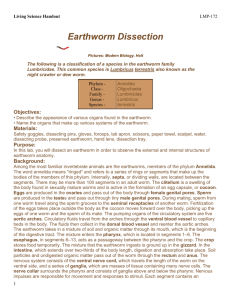

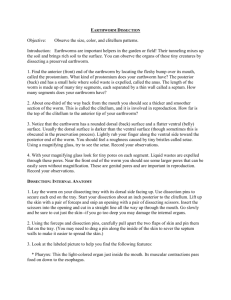
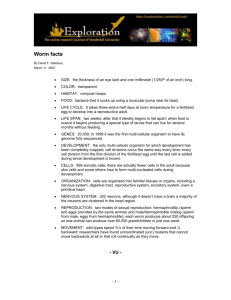
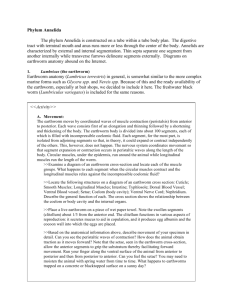
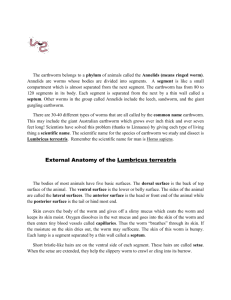


![Earthworm Lab [1/16/2014]](http://s3.studylib.net/store/data/007071636_1-f0a789e538fb90aecda95ecf7b0a3557-300x300.png)
